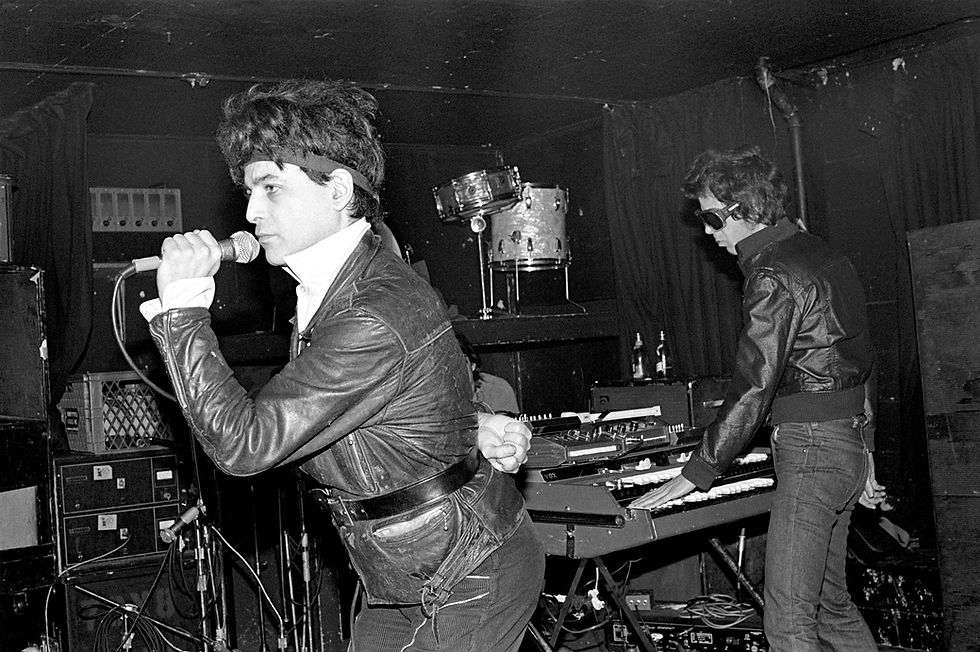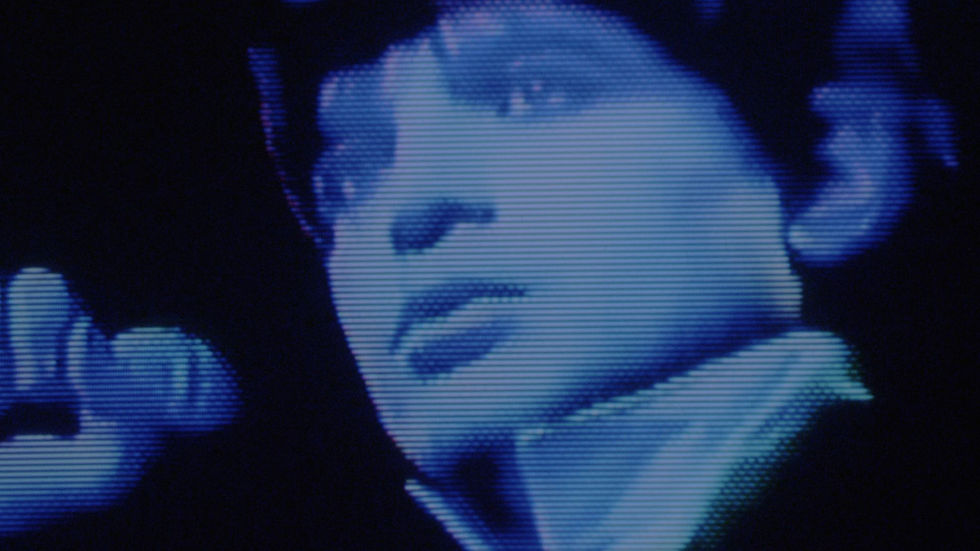Three Questions: Alan Vega's Lost Record Mutator
- Danz

- Apr 20, 2021
- 5 min read
Updated: Mar 21, 2023
Alan Vega and Martin Rev formed the band Suicide in 1970. Suicide have been recognized as one of the most influential acts of their era - garnering a cult following. Perhaps the original proto-punk band who incorporated synths into their work.

Just look back to Synth History's interview with LCD Soundsystem's James Murphy. When I asked him: "If you could pick one album in all of music history that you think everyone should listen to at least once, what would it be?" James responded, "For a long time I would have said Suicide’s first record, for its sheer singularity of vision and generosity wrapped up in terror. And because I’ve seen that record turn more people inside out than any other. Maybe I’ll still say that."
Alan Vega kept creating all the way up until his death in 2016. He had a prolific solo career as a musician and visual artist.
Jared Artaud of the band The Vacant Lots unearthed the upcoming lost Alan Vega record Mutator, out April 23rd on Sacred Bones. I got to ask him three questions about the project and what it meant for him to work with Alan.

Synth History: Do you remember your first experience listening to Suicide?
Jared: Yeah, it changed my life. I remember around 2010, The Vacant Lots had formed and we just got back from our first tour in the USA with Spectrum. I was at my friend Ian's apartment in Burlington, Vermont and he was blasting this music in the other room. It was Youtube footage of "Ghost Rider" live by Suicide. Hearing that for the first time was a total game changer for me. Later that year Brian and I went to see Kraftwerk perform Computer World in its entirety at MOMA. All of those things happening to us in the same year was monumental. I'll never forget that moment discovering Suicide. The next day I tracked down all their records and took a deep dive.
Synth History: Can you describe the process of mixing and releasing Mutator, the lost record that is coming out soon?
Jared: Alan's longtime collaborator and wife, Liz Lamere and I discovered the original ADAT tapes of Mutator a couple years ago when we were going through the Vega Vault together. We knew we stumbled upon something special but really had no clue to what extent. In order to hear what was on the tapes we had to get them transferred into the digital zone, so we contacted my friend and engineer Ted Young. After the tapes were transferred Liz realized these were the last recording sessions of Mutator. It's where they were left before Alan moved onto working on other songs and records.

A massive part of Alan's process was not going into the studio to make records but to experiment with sound. Therefore he left behind so much material, finished and unfinished, after decades working in the studio through this process. That was Alan's method - his process was more like a visual artist making work rather than a traditional musician; it was inherently iterative. The visual artist in him came through as a musician. The Mutator recordings from 25 years ago that Alan had recorded with Liz wasn't intentionally shelved, but Alan had already started working on other material, and a batch of songs that later became his next album 2007.
During the mixing process, it was important for Liz and me to make the album and the overall sound of the record cohesive and modern, not dated or over-produced. Although Mutator was raw and unmixed there existed a conceptual whole. As a producer, but also as someone who has studied Alan's work and whose music has similarities to his, I brought my own instincts and artistic sensibilities into the mixing process. Our intention was to reach a balance between the universal themes that Alan was exploring and the minimalism of the music. It was apparent that so much of what Alan was writing about back then in his lyrics is relevant today, and our mission became focused on getting the music out there where it belongs, connected with other people. We felt compelled to complete the unfinished album while staying true to Alan's vision and make something he would have been proud of. Working with engineers Ted Young throughout the mixing process and Josh Bonati on the mastering was crucial, too. Now, we have a great team in place as we've joined forces with Sacred Bones to release Mutator and more Vega Vault music in the near future, as well as NY creative director Michael Handis who's been a leading force with all the Vega social platforms and design work.

Synth History: Are there any particular synths featured heavily on this record?
Jared: I think more than anything Alan's process was deconstructive, minimal, and transformative. By that I mean it involved reducing elements to the fewest parts possible, but also transforming the sound until it was unrecognizable from the original source. He was constantly searching for unique sounds he never heard before. He didn't just want to take a synth and write a melody with it, rather he truly wanted to fuck with the instrument until he produced a result he was satisfied with.
This process ultimately led him to creating sounds and riffs that revolved around his "no note" philosophy. He would speak to me about this a lot before he died. It's basically using sound not built around any particular key or chord structure but more akin to composing sounds rhythmically that worked together, almost like the way he made his light sculptures. In this sense, Alan was an architect of sound. Sometimes he would go into the studio for months just to work on sounds and then usually at some point Liz would try to inspire him to compile an album together. She's his most crucial creative ally for his solo career because Alan really never stopped working on his art. Even up to his last days he was constantly creating working on paintings and drawings.

Fundamentally, Alan perceived electronic instruments as "machines" as he would say, and never called them by their model name or brand, which I don't think he cared much about. However, there are a lot of pieces of gear that he used from the 80s and 90s hanging around his studio and in storage. Ric Ocasek had given Alan this incredible Arp Solus, which he had laying out on a table in his apartment. We were fortunate enough to use it on The Vacant Lots Interzone album. I remember asking Alan about it and he pointed to it saying "oh, that fucking machine over there...." More than anything, it was like the way Alan worked with light and color in his visual art; sound for him was malleable and something he could manipulate until it corresponded with his vision. Once the music was in place he would then usually do a one-take vocal performance. Mutator is driven by these performances, which was incredible to listen to solo'd. Alan didn't give a shit about how many filters or features a synth or an electronic instrument had, nor how rare or cheap the device was, but rather perceived it as a means to an end. Whatever the medium Alan was working with he embraced it spontaneously and in an innovative way. Alan would repeatedly say to me two things: There are "no mistakes" and "KISS," which stood for Keep. It. Simple. Shit.
References : Synth History Exclusive.






